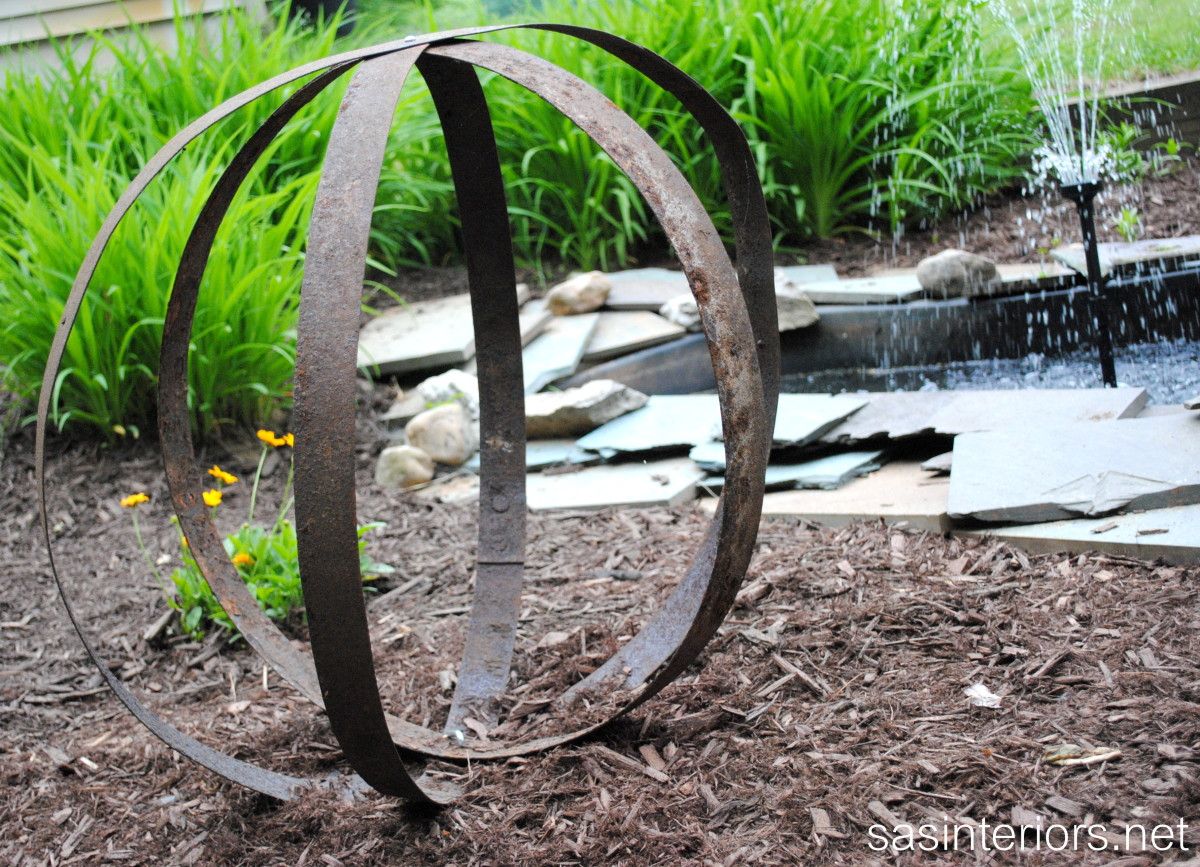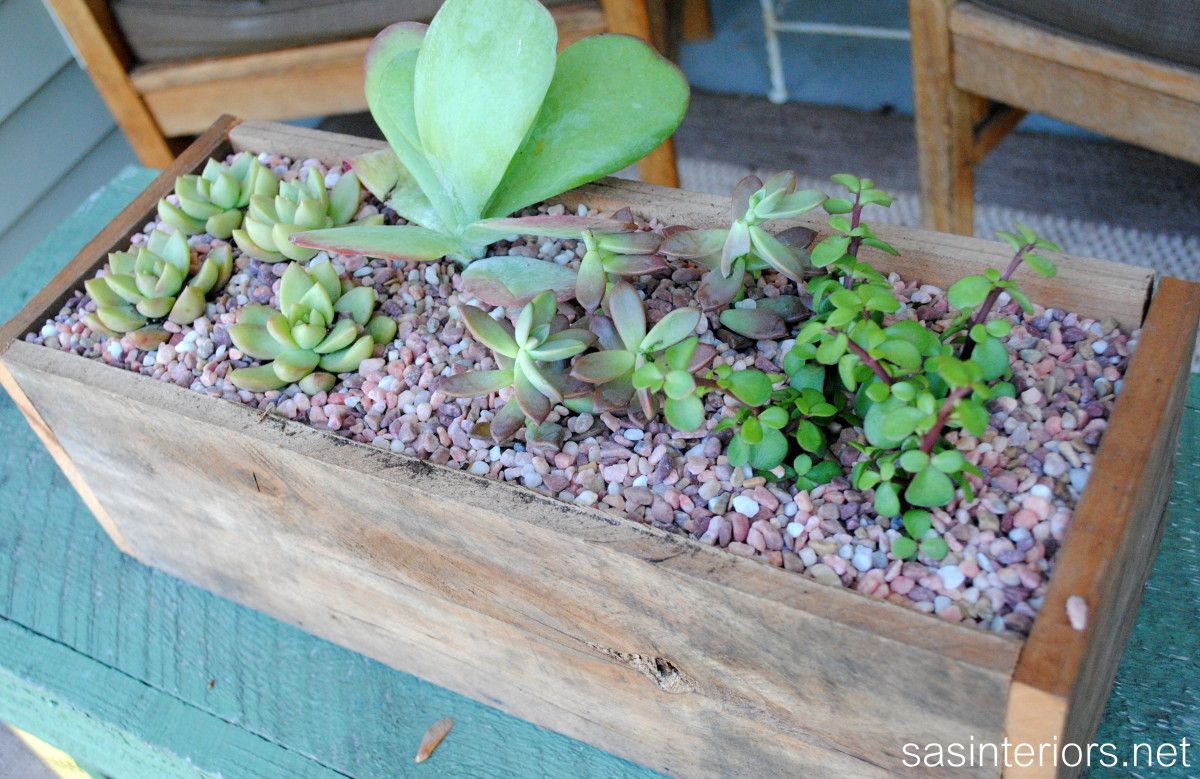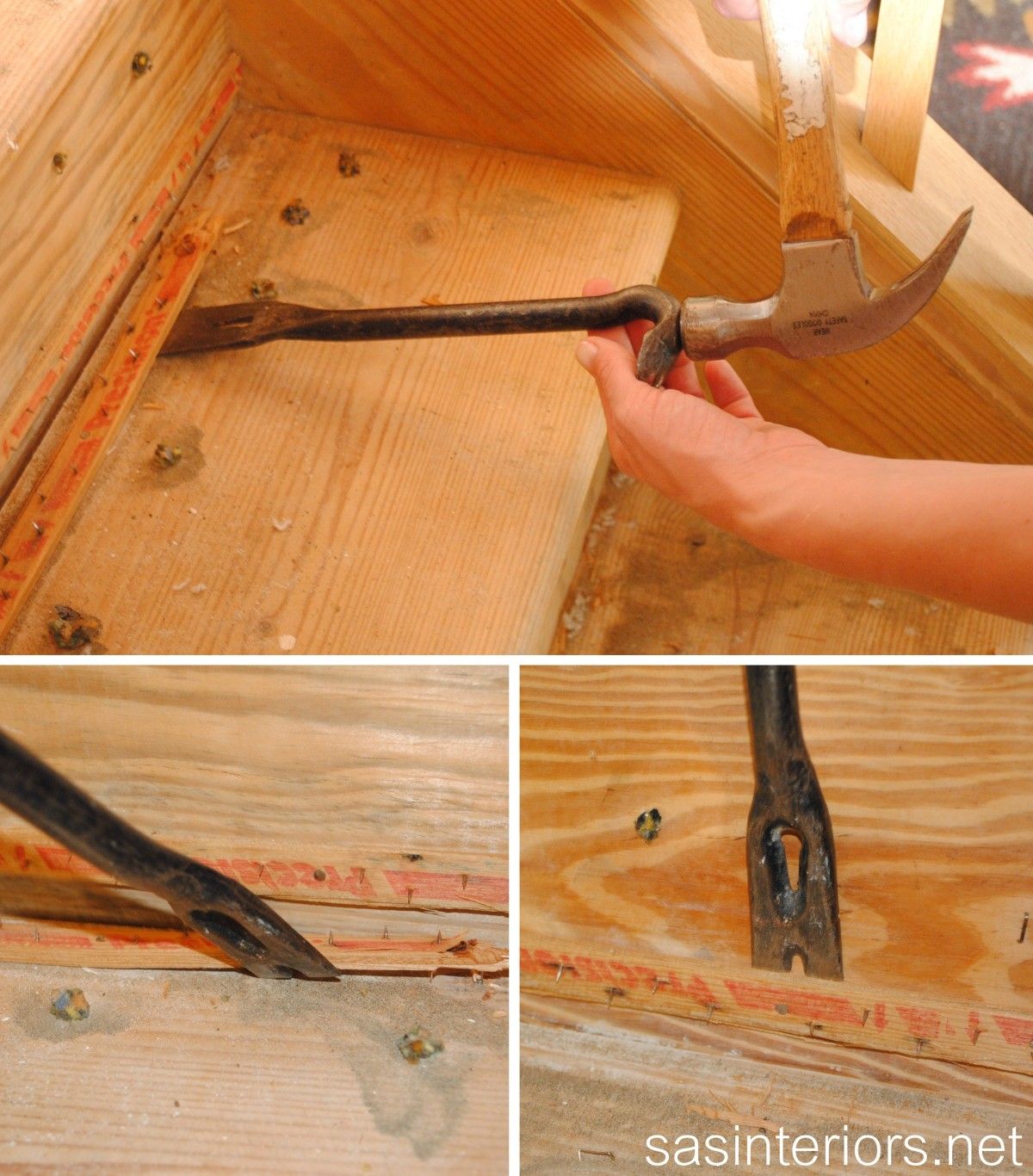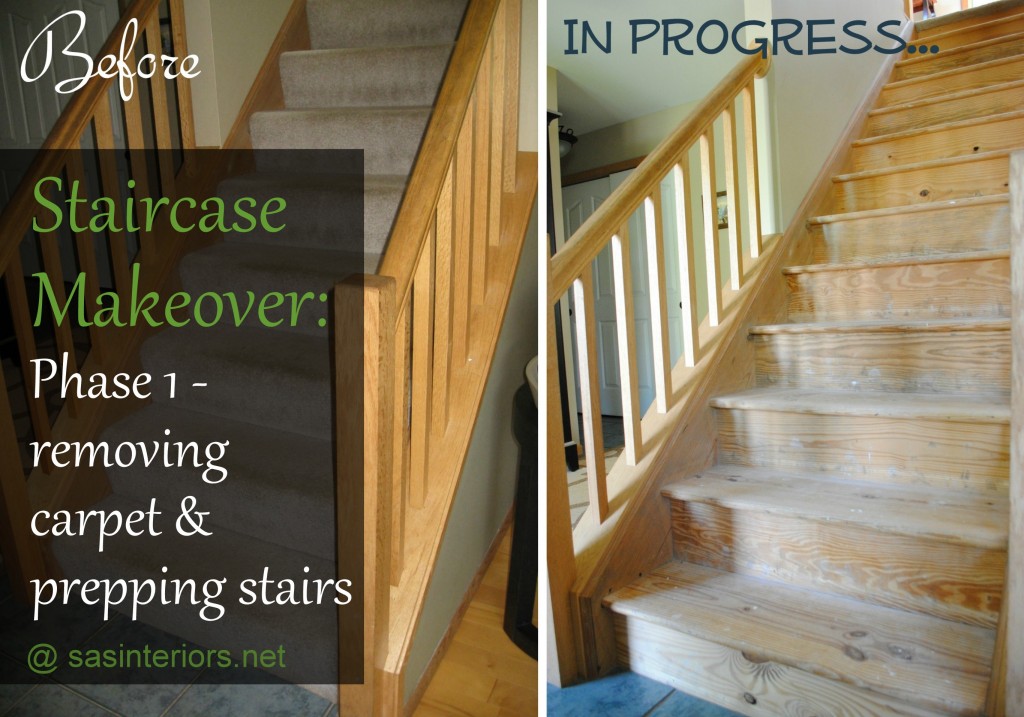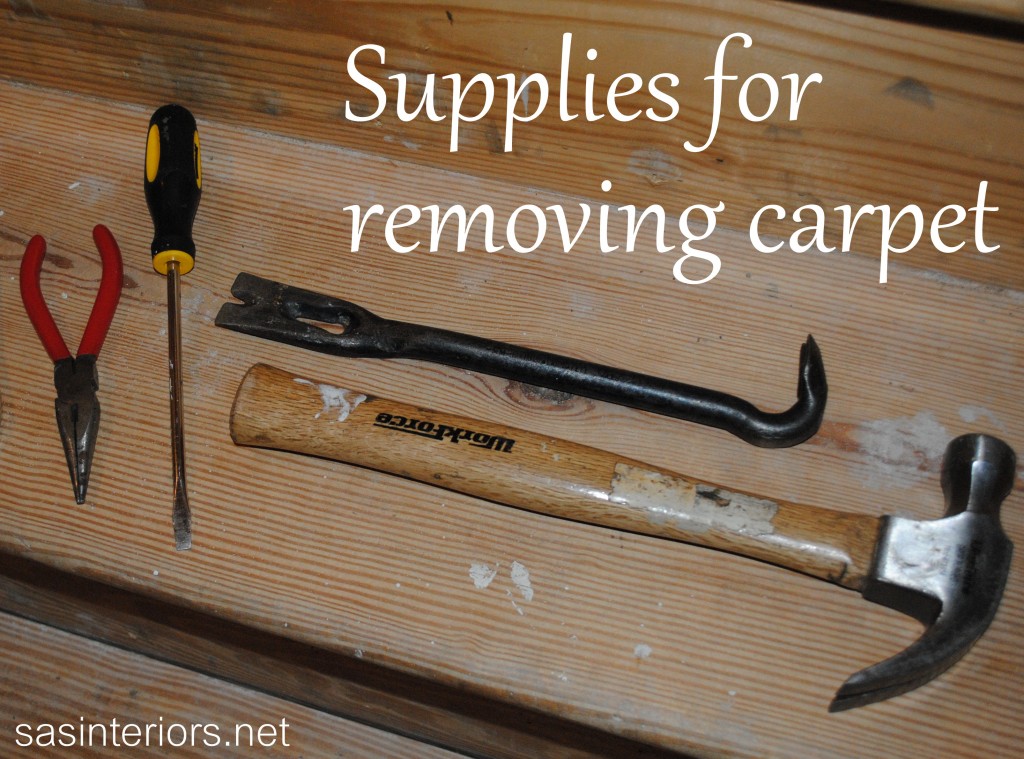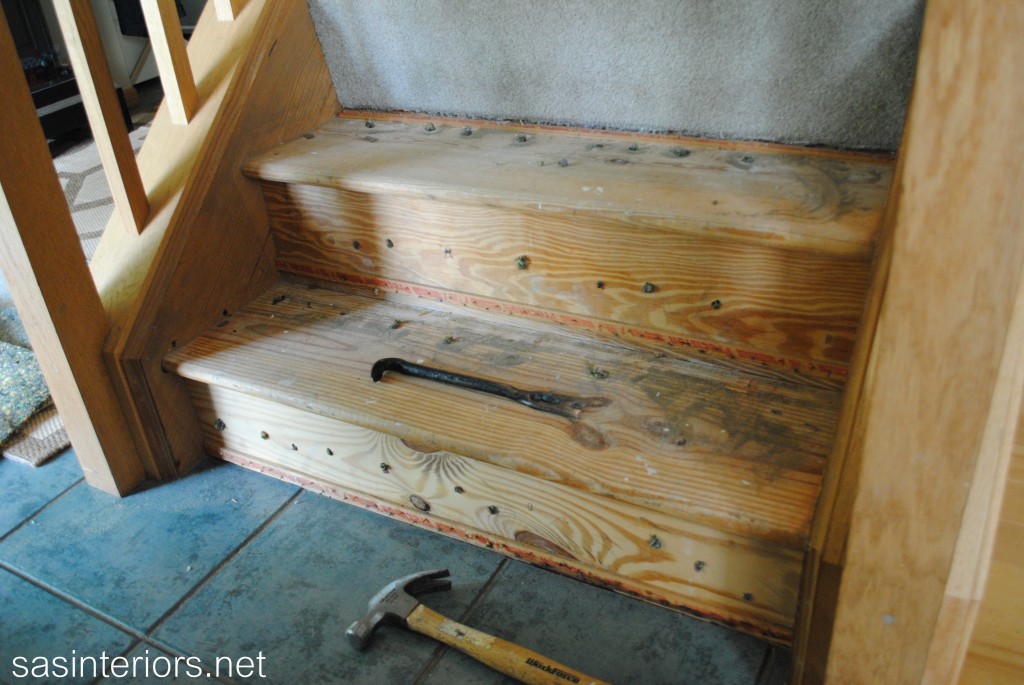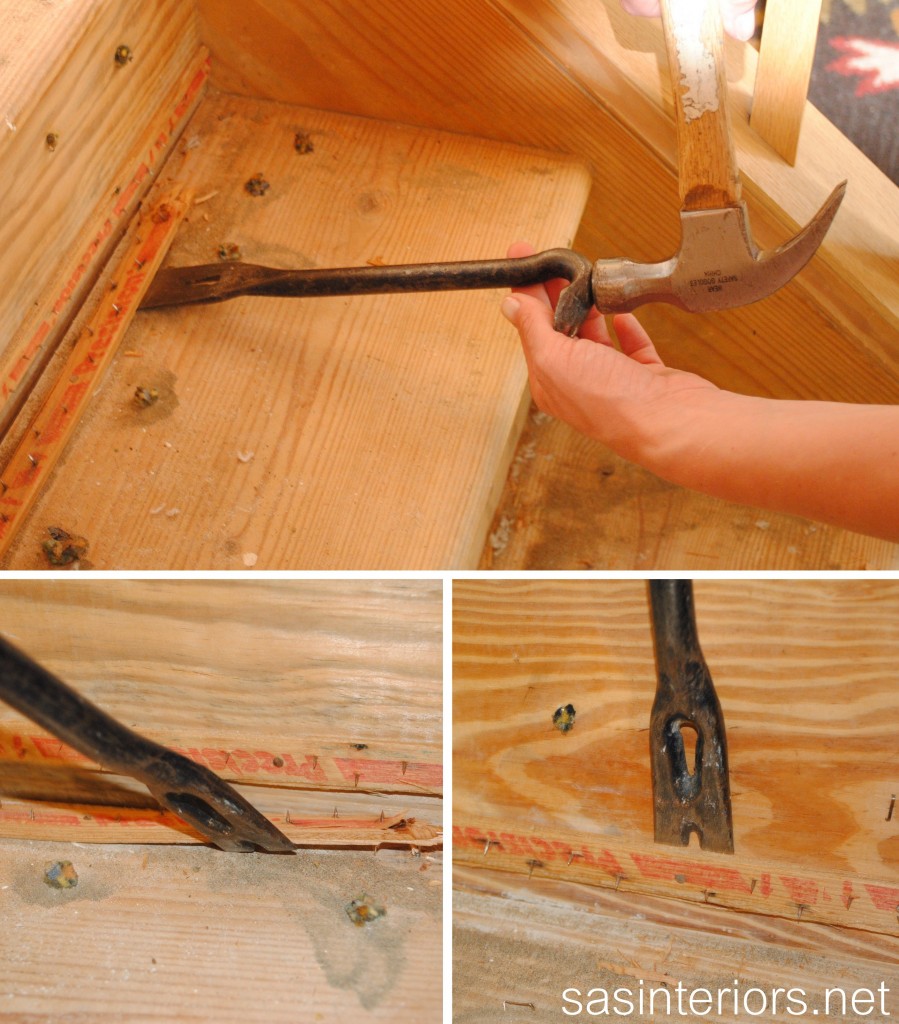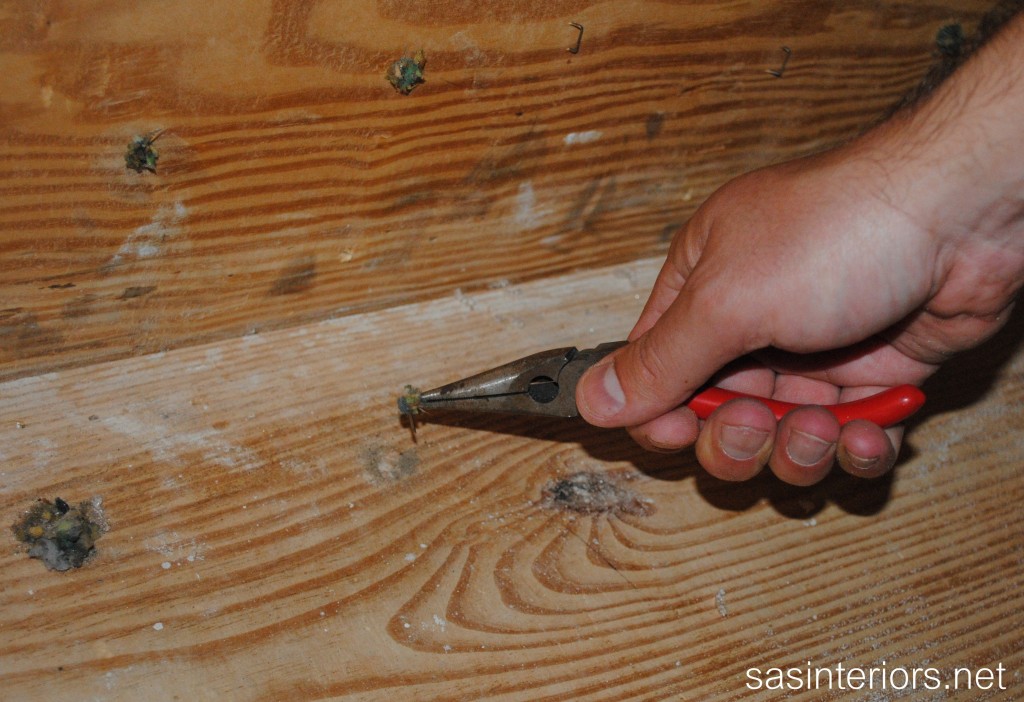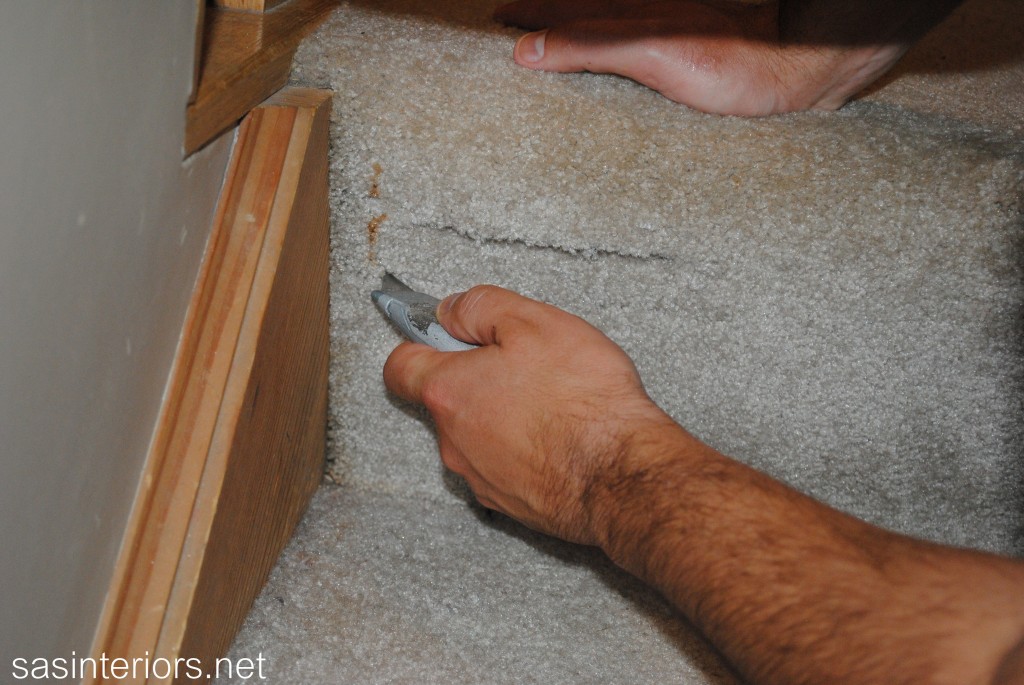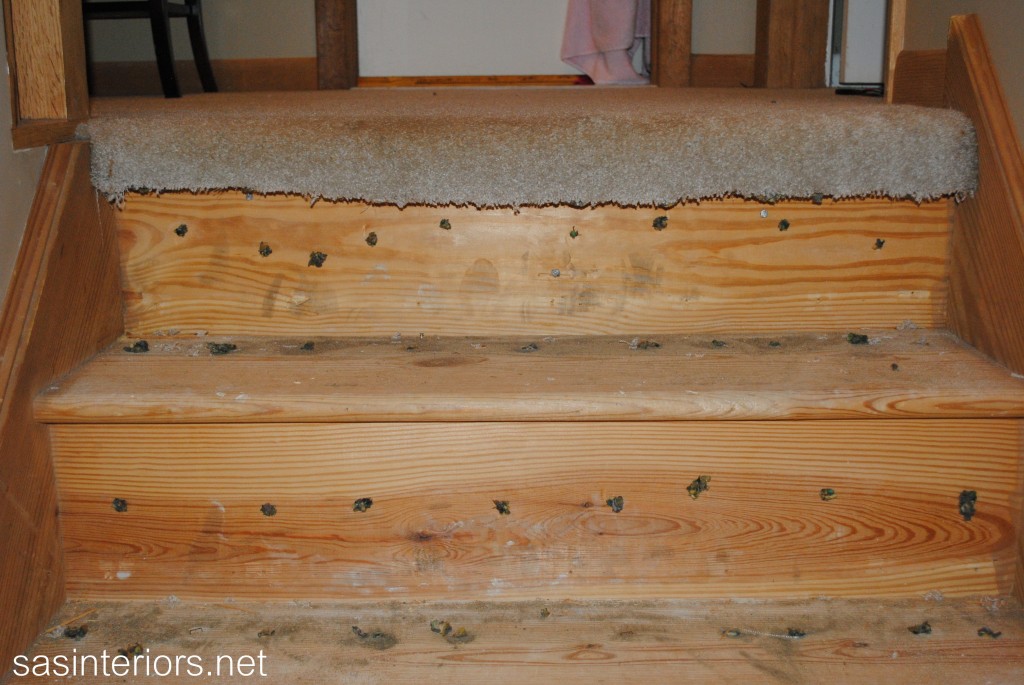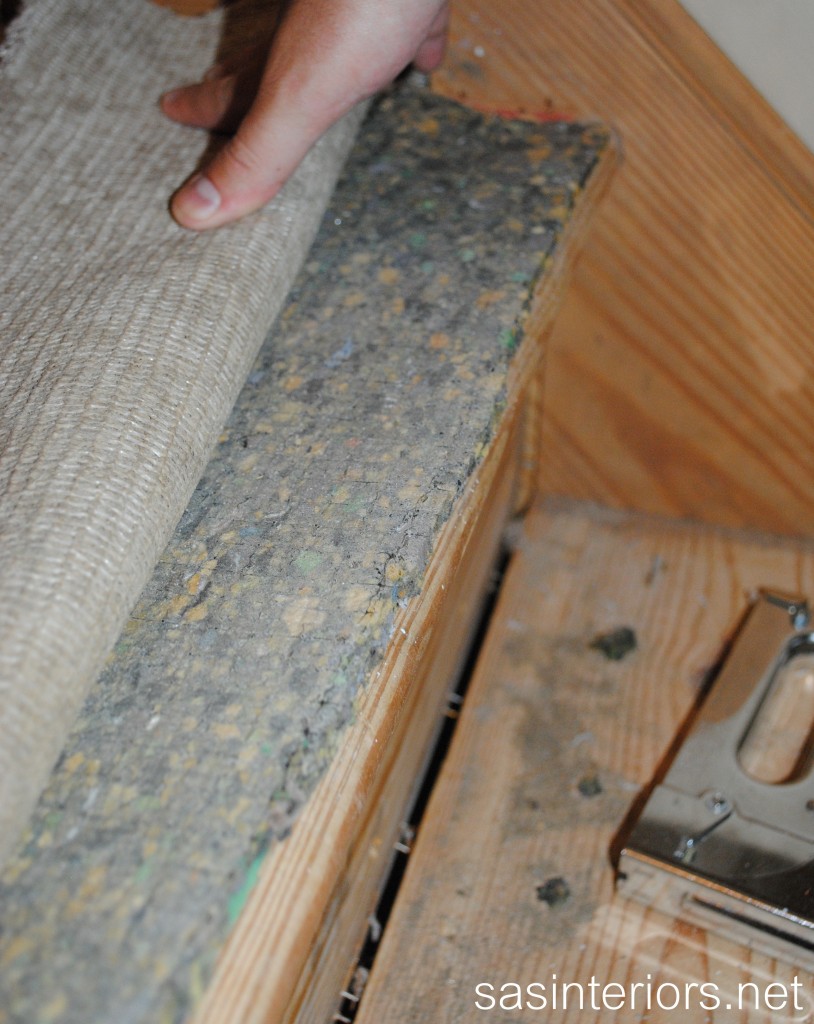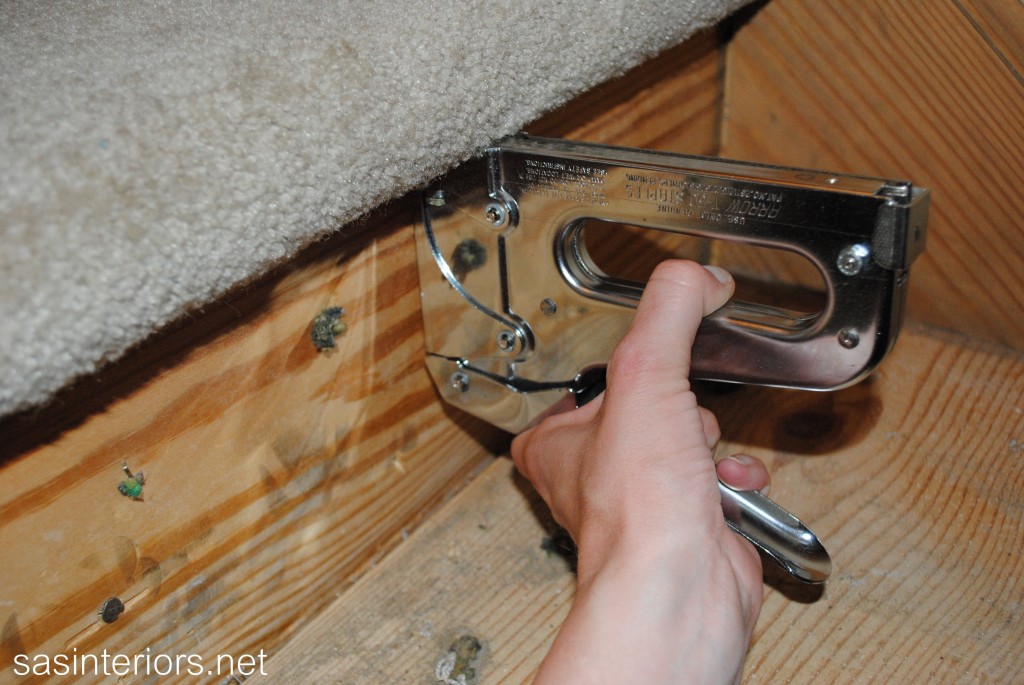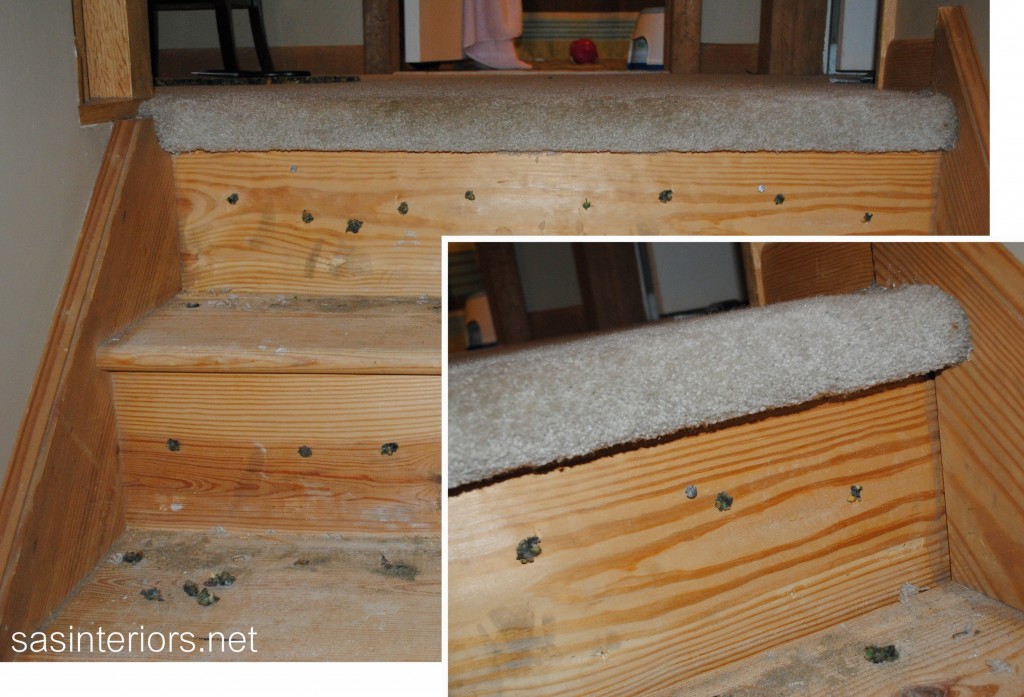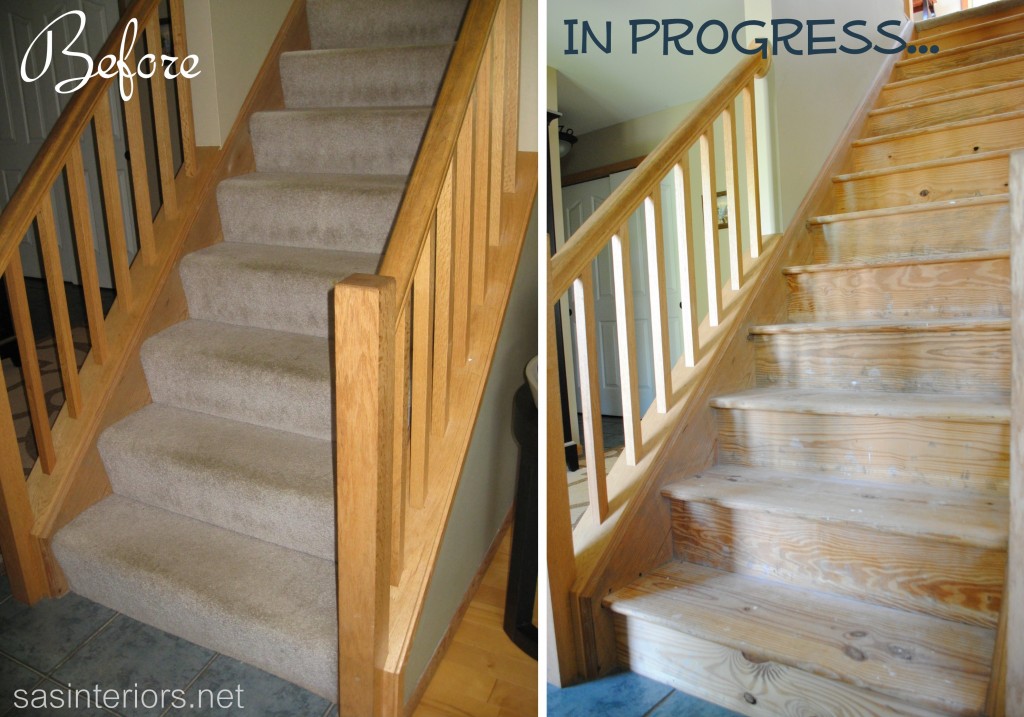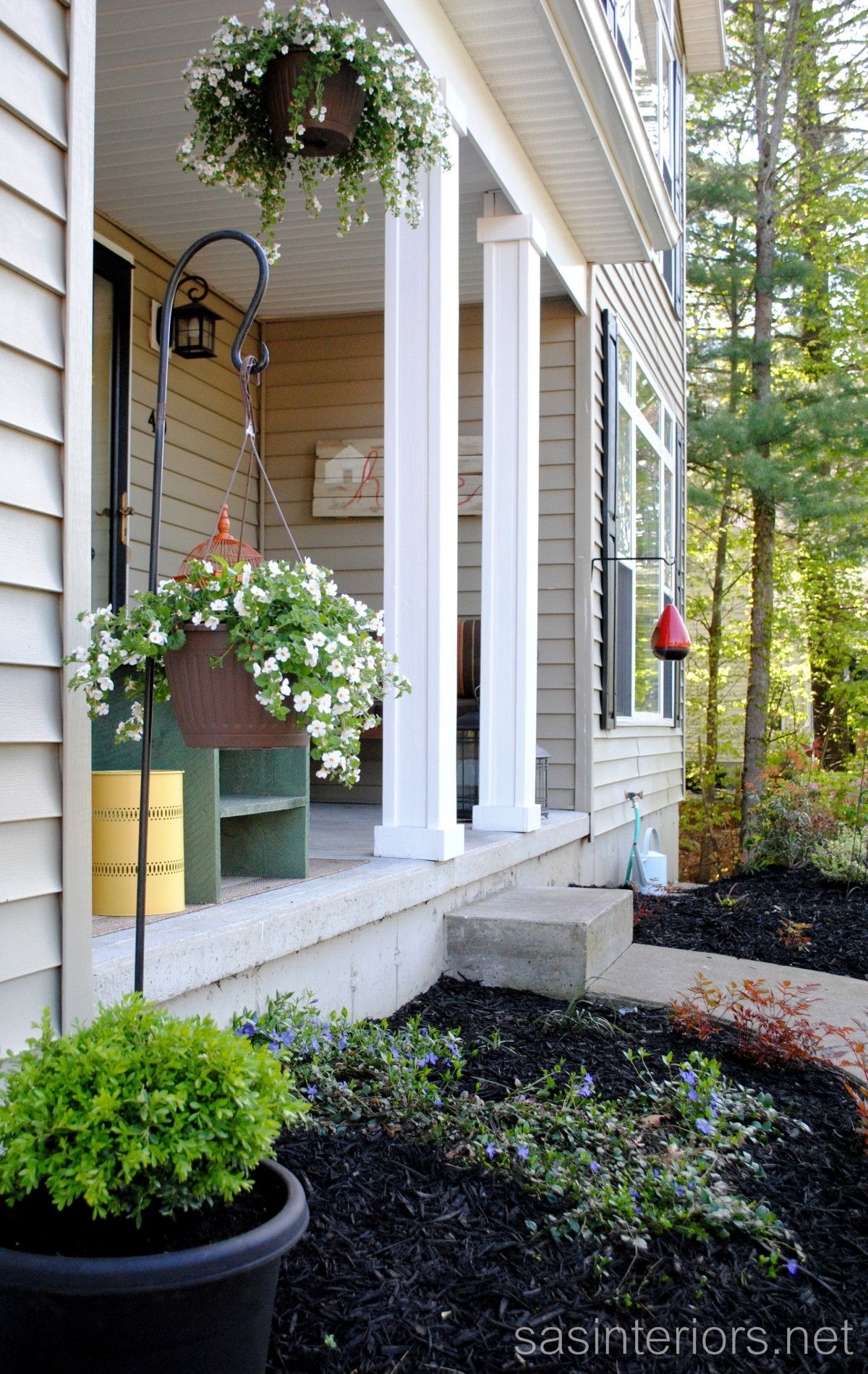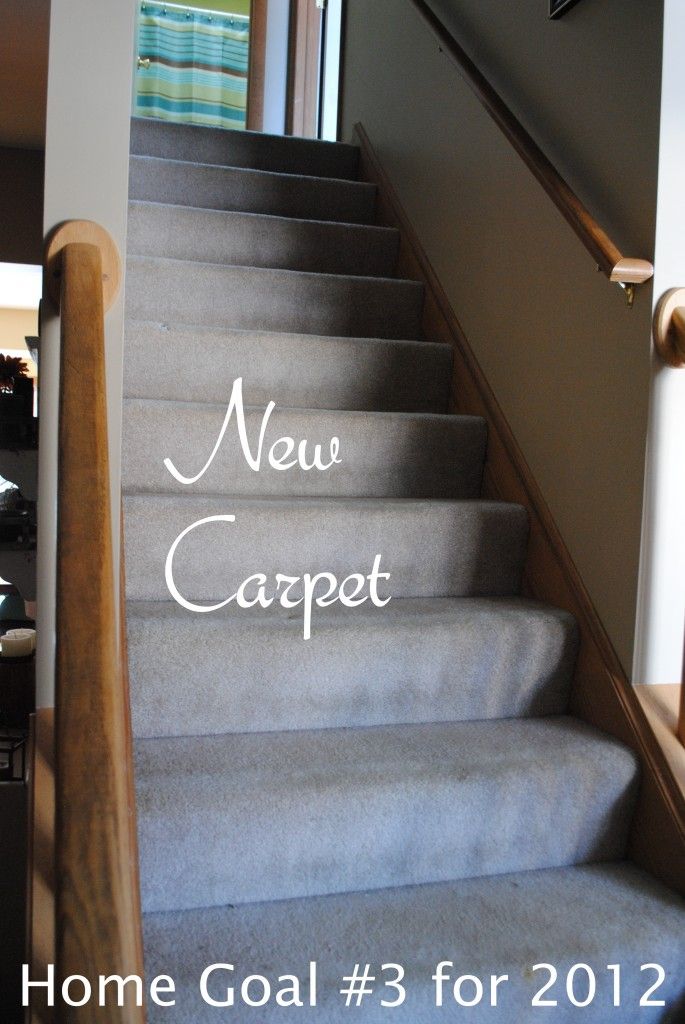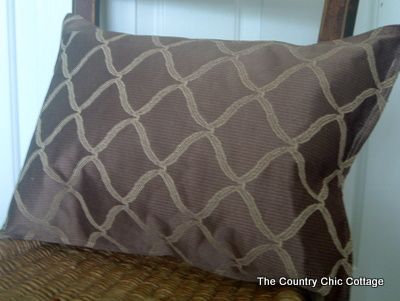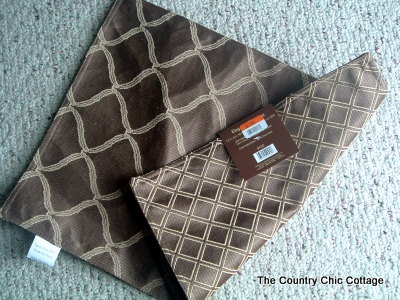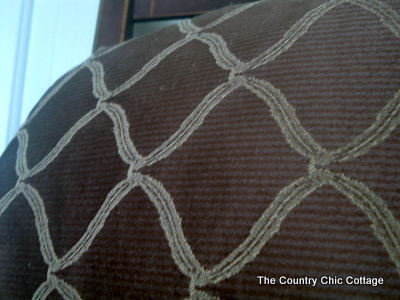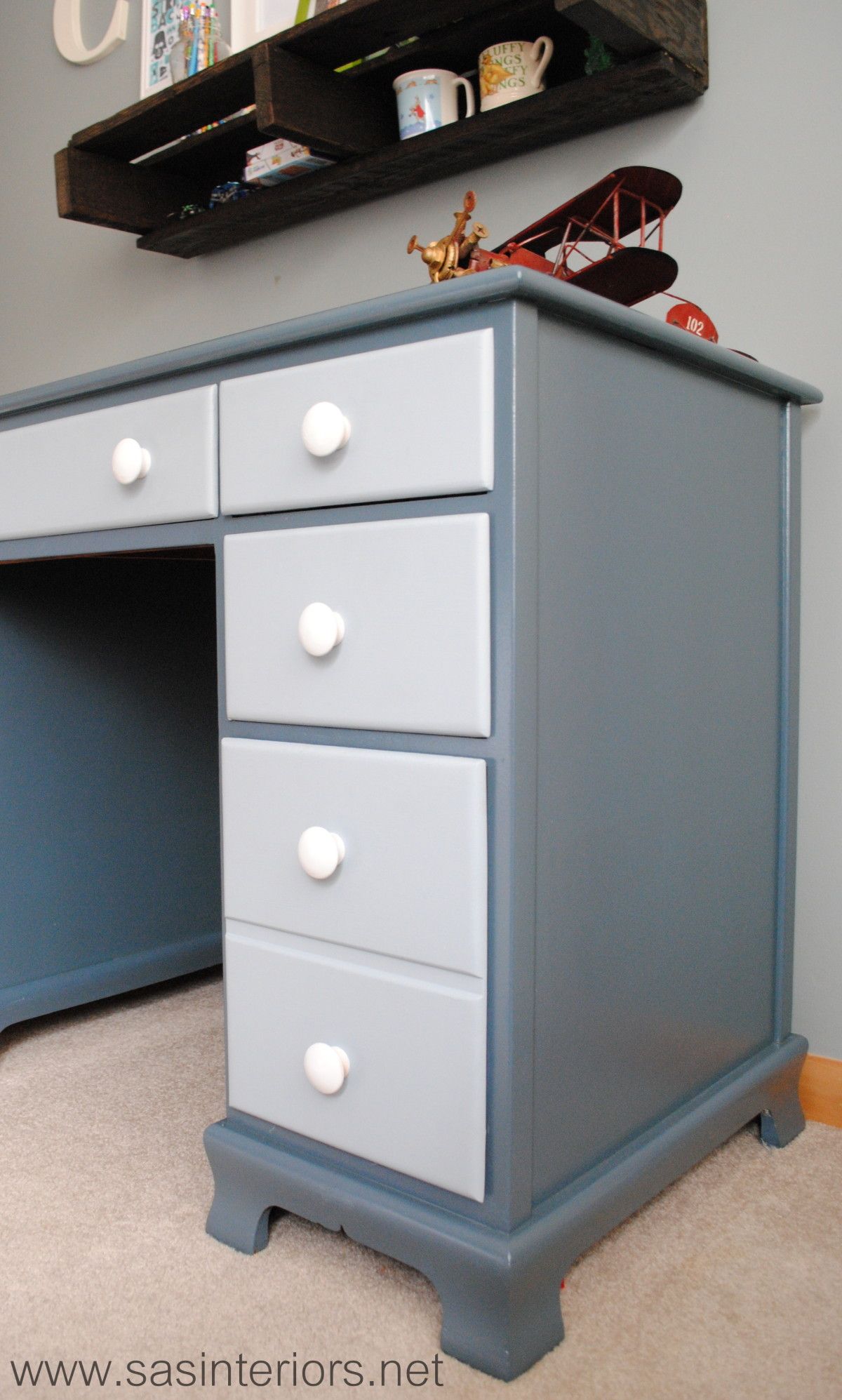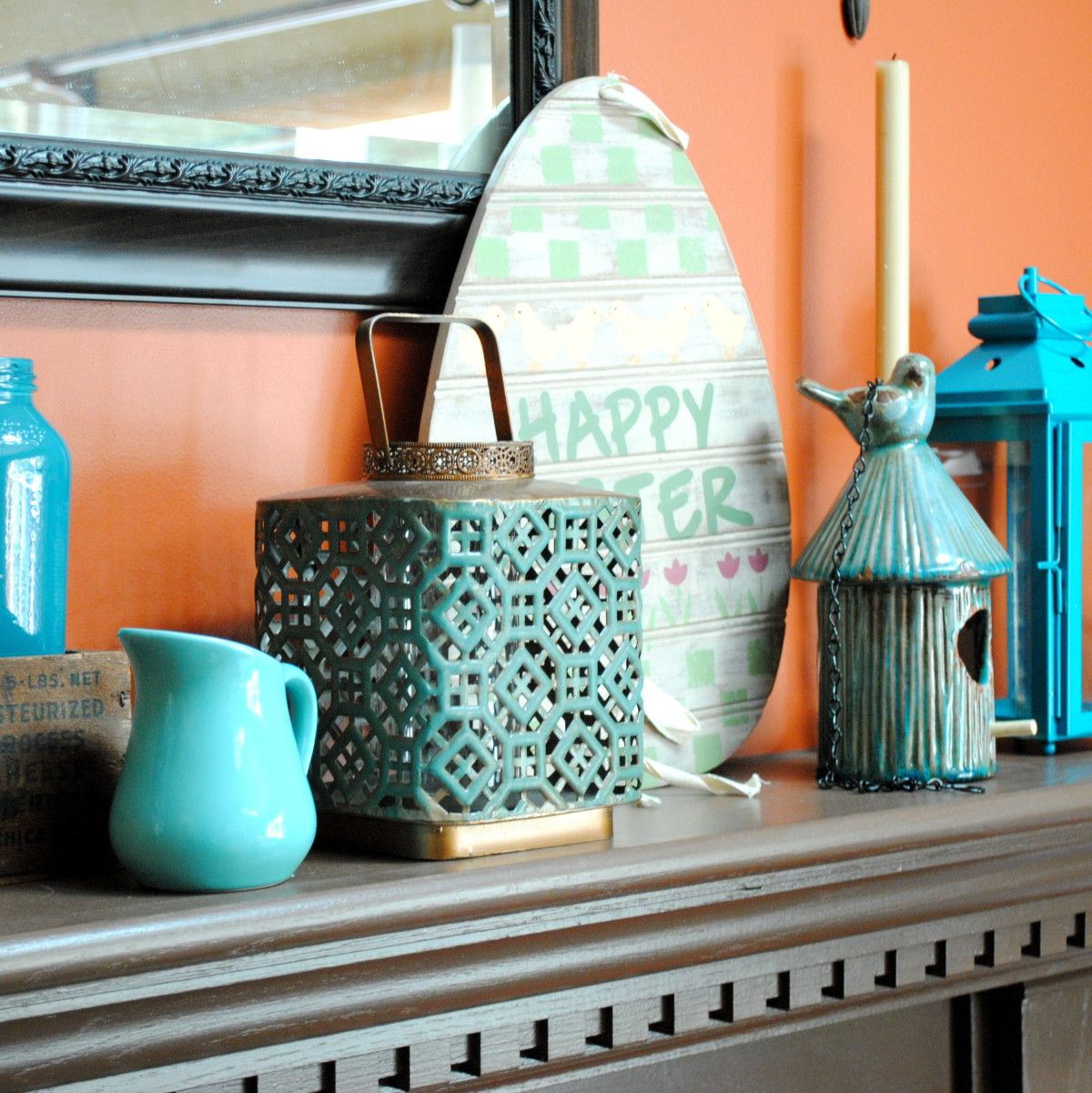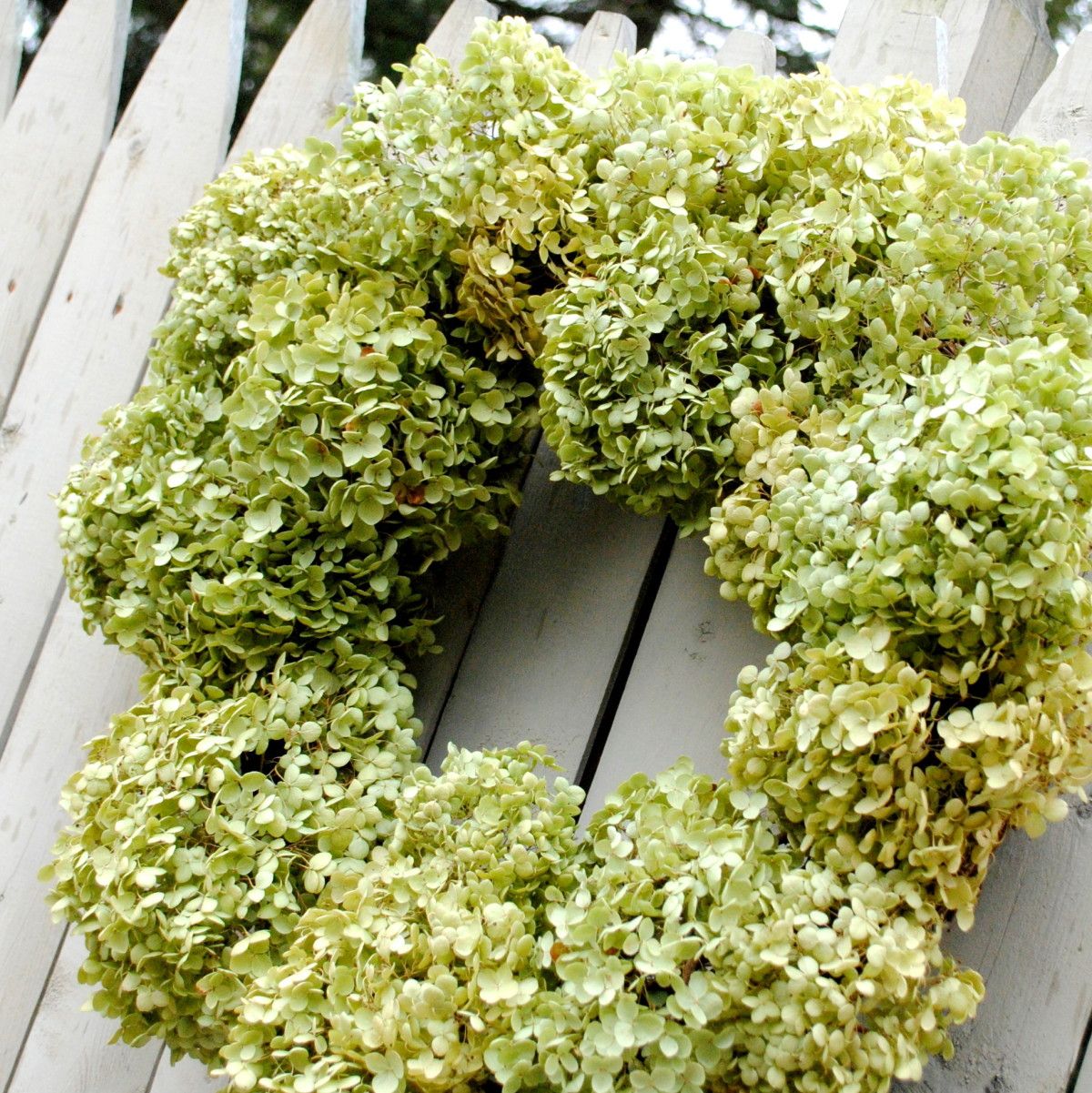It’s almost been 2 weeks since I posted about the stair makeover, but don’t think I haven’t been hard at work. The staining took quite a long time and not because it was difficult, but for another reason – keep on reading. Anyway, I can officially say that the staining is complete and I am at the half way point now (I hope).
This second phase of the staircase makeover covers sanding the stairs, filling the gazillion holes from the carpet tacks and staples, and staining the treads. So let’s jump right in and get started!
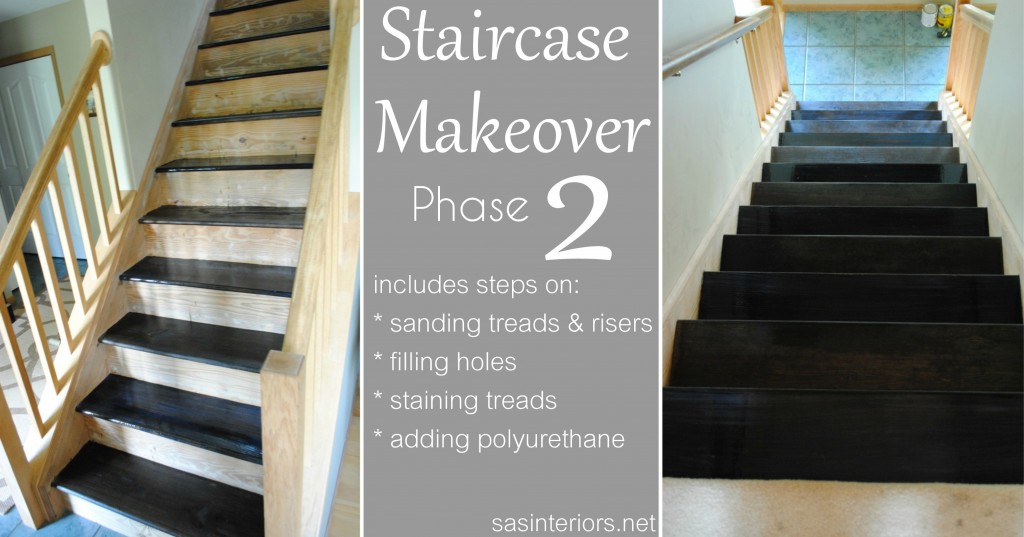
Project Details
Duration of Phase Two: 1.5 hours for sanding & filling holes; 2 overall hours for staining / polyurethane (5-10 minutes for each coat)
Phase 2 Difficulty: Easy to Medium
How Many People Needed: 1
The supplies I used for this phase of the project are:
- Orbital Sander (sandpapering by hand is also possible, but will take longer)
- Wood Filler (in a color to match the wood)
- Stain – I used Minwax Wood Finish in Ebony
- Polyurethane – I used Rustoleum (water-based) in a gloss finish
- Cheap brush or sponge brush that can easily be thrown away
- Mineral Spirits (if you don’t want to use a cheap brush and instead wash them)
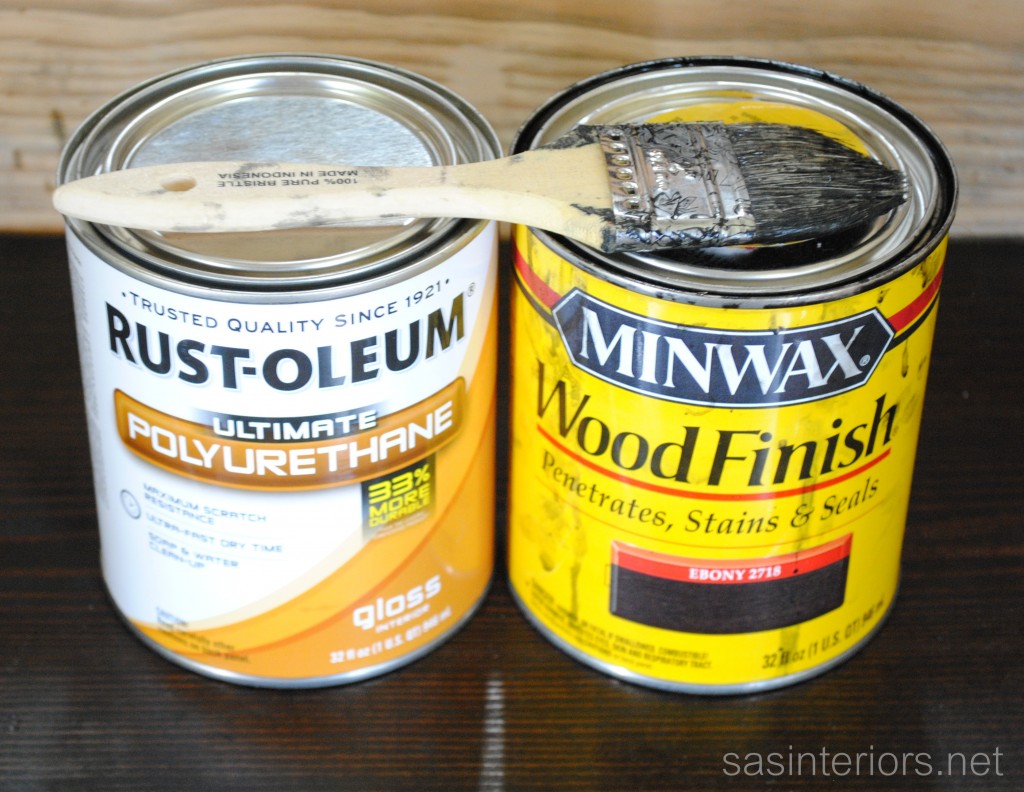
In my last post on removing the carpet and prepping the stairs, I left you off with this…
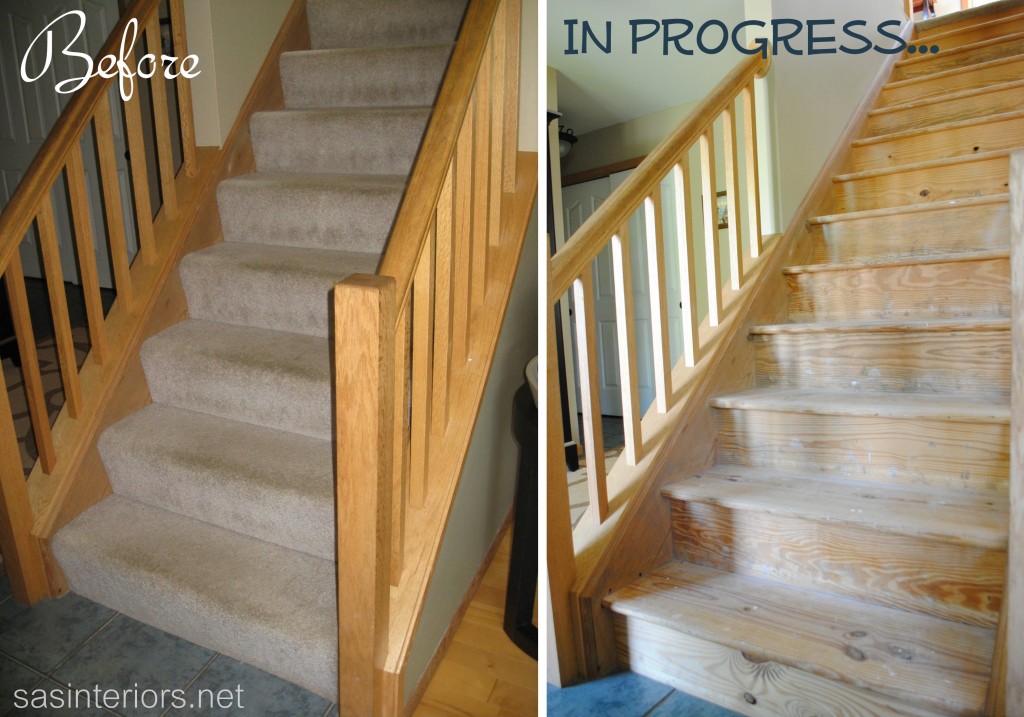
Once the carpet tacks and staples were fully removed, it was time to sand the stairs.
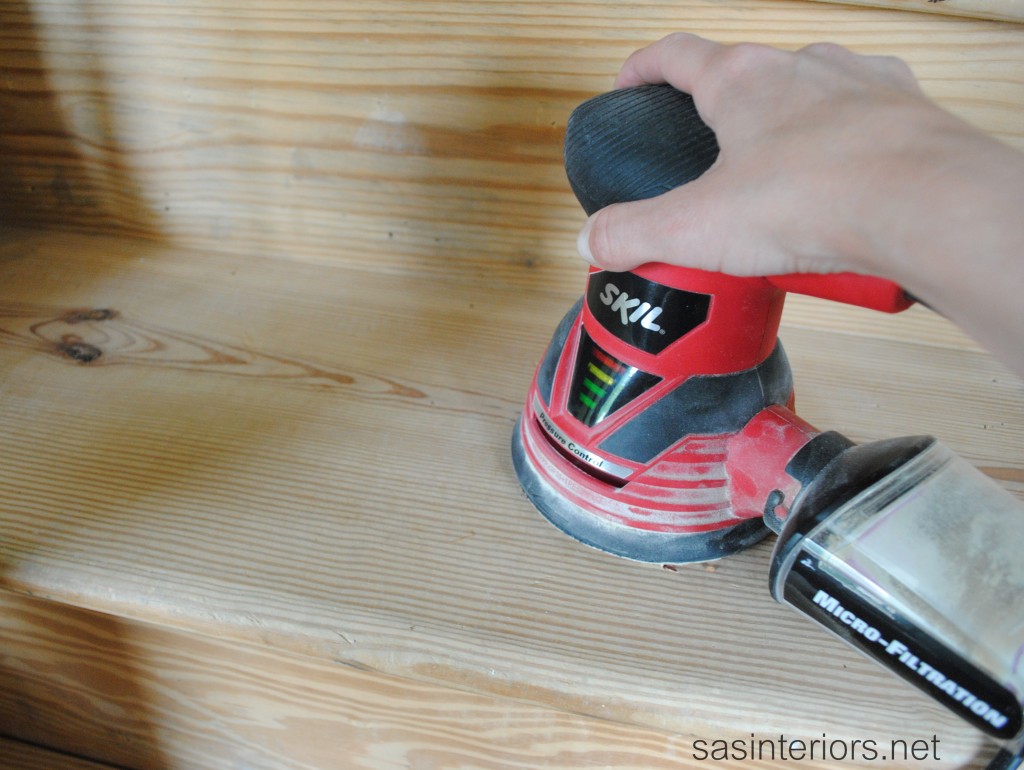
As I mentioned above in the supply list, I used my orbital sander to get a really smooth finish and to take away marks and old paint drippings. Manually sanding the treads and risers with sandpaper is fine too, but will take longer and is more laborious – if you’re looking to build your arm muscles, this may be your calling 😉
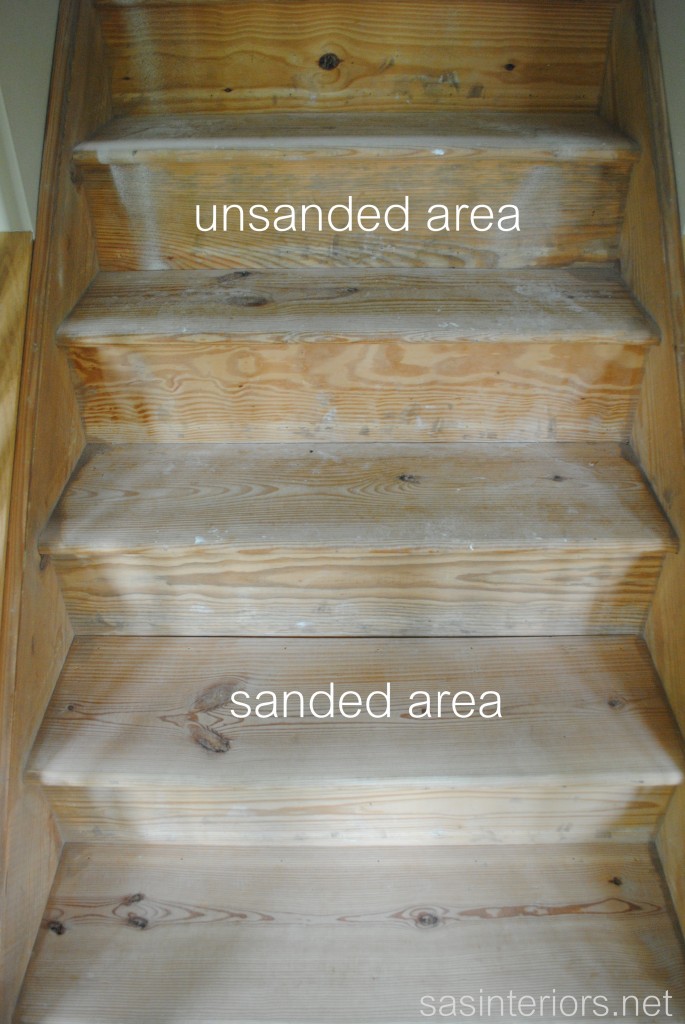
Once the stairs were smooth, I used wood filler to fill in the many holes left from the carpet strip tacks and the carpet pad staples. There were also a few holes from the natural grain of the wood that I also filled in.
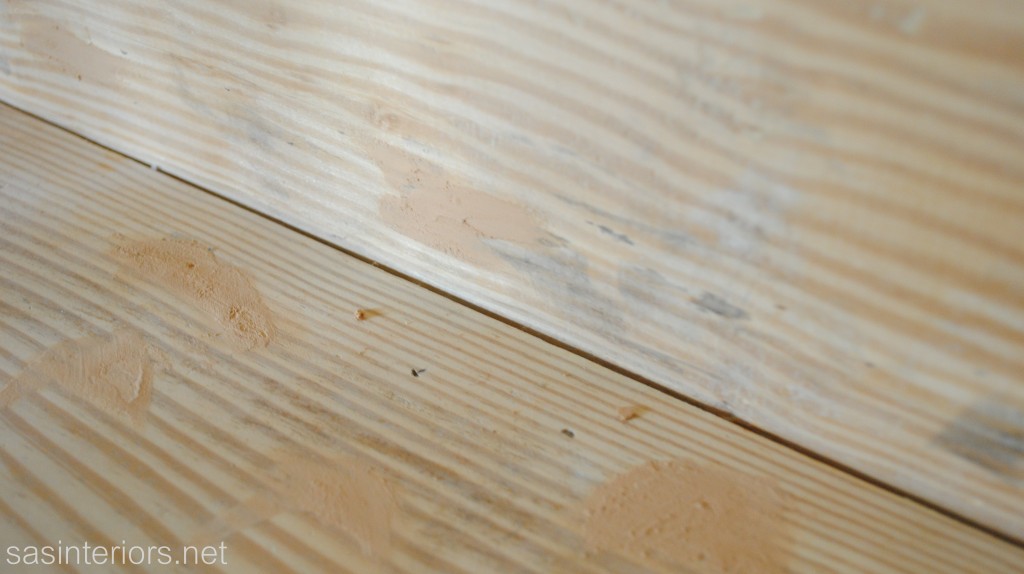
After the holes were filled and the wood filler was completely dried and hard 24+ hours later (it’s important that the wood filler is really dry!), I sanded again. The wood treads were ready for staining when the stairs were completely smooth to the touch.
Now to the staining process…
I don’t have alot of staining experience, and frankly staining has always scared me. Unlike painting, it seems so difficult, but thankfully I was proven wrong with this project.
As I mentioned in my last post, I was desiring a really dark stained tread for the stairs, so I chose to use an ebony finish. Before making the final decision though, I reached out to my blogging bud and the very talented DIYer, Kate of Centsational Girl. I had showcased her stair makeover as one of my inspirations, and wanted to know what she used for her dark tread. She told me that she used a product called Duraseal, which has a molasses-like consistency and gave a darker finish because it was less watery than typical stain. I couldn’t find the Duraseal and was anxious to get started on the staining, so I chose to use Minwax Wood Finish in ebony. It was the darkest color they had, so I was up for the task of trying it out. As an alternative, Kate gave me the advice of trying a gel stain which like the Duraseal has a thicker consistency. I’m a bad girl because I didn’t take her advice, BUT thankfully I’m happy with the result I achieved, so all is good 🙂
When staining, it’s key to apply thin coats of stain and angle the brush at a 45 degree angle to avoid bubbles. After cleaning the stairs with a rag to remove any remaining dust from the sanding, I was ready to get started. I used a cheap bristle brush to apply the stain, so I could easily throw it away after the stain applications.
Here are the few steps I took to stain the treads.
1. I started at the corner of the treads.
2. I feathered my brush towards the center, parallel to the wood grain.
3. Then I carefully dragged my brush along the edge of the tread and the stair stringer.
4.. After that I feathered the stain in the same direction of the grain again.
The reason for doing these steps is so the tread is thoroughly covered with stain AND minimal stain gets on the stringer (side piece). For my stairs, I will be painting the stringer white and using a stain blocker beforehand, BUT I was nervous (here comes my apprehension of using stain again) and didn’t want too much stain to get onto the stringer. Alittle nutty, I know… but it worked.
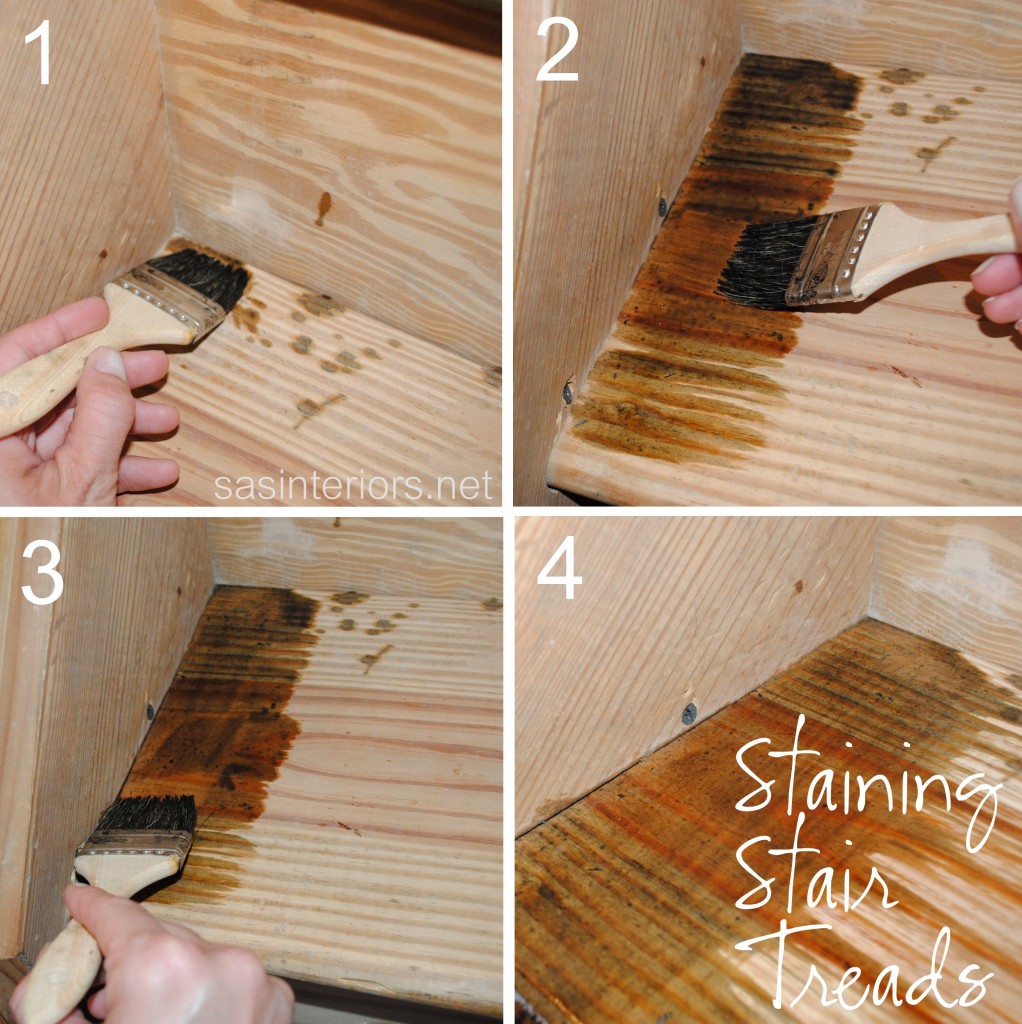
Continuing with the staining, I applied it to the remainder of the tread in the same direction as the wood grain.
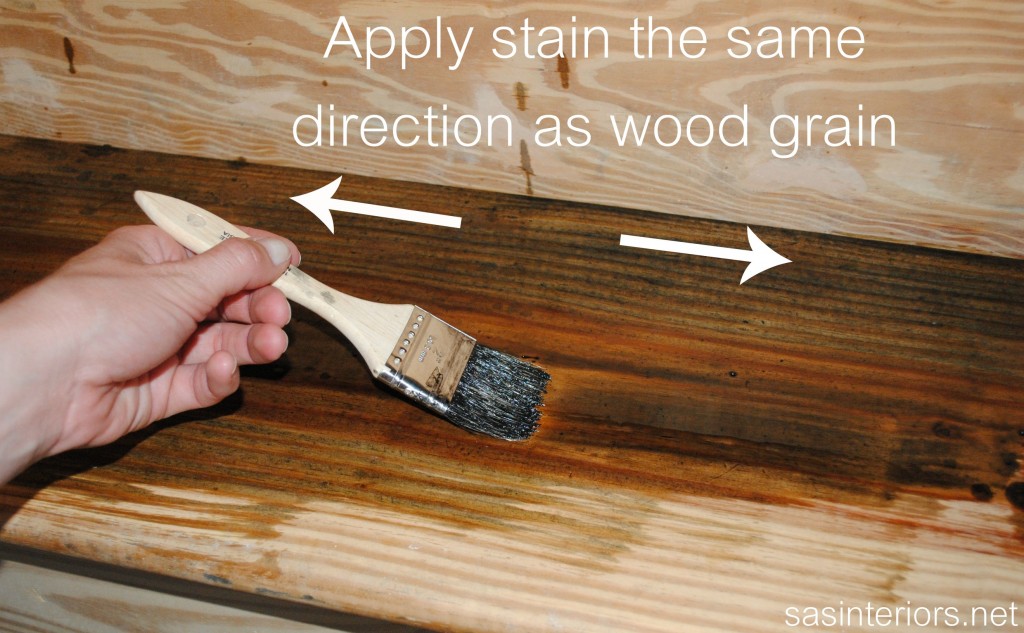
Now that I shared the particulars on how to stain, let me tell you some more details…
The staining process took a while and the major reason was because we still needed to use the stairs. What to do?? Well, I ended up staining every other stair so we could still get up to the second floors. We did need to sleep, of course 😉
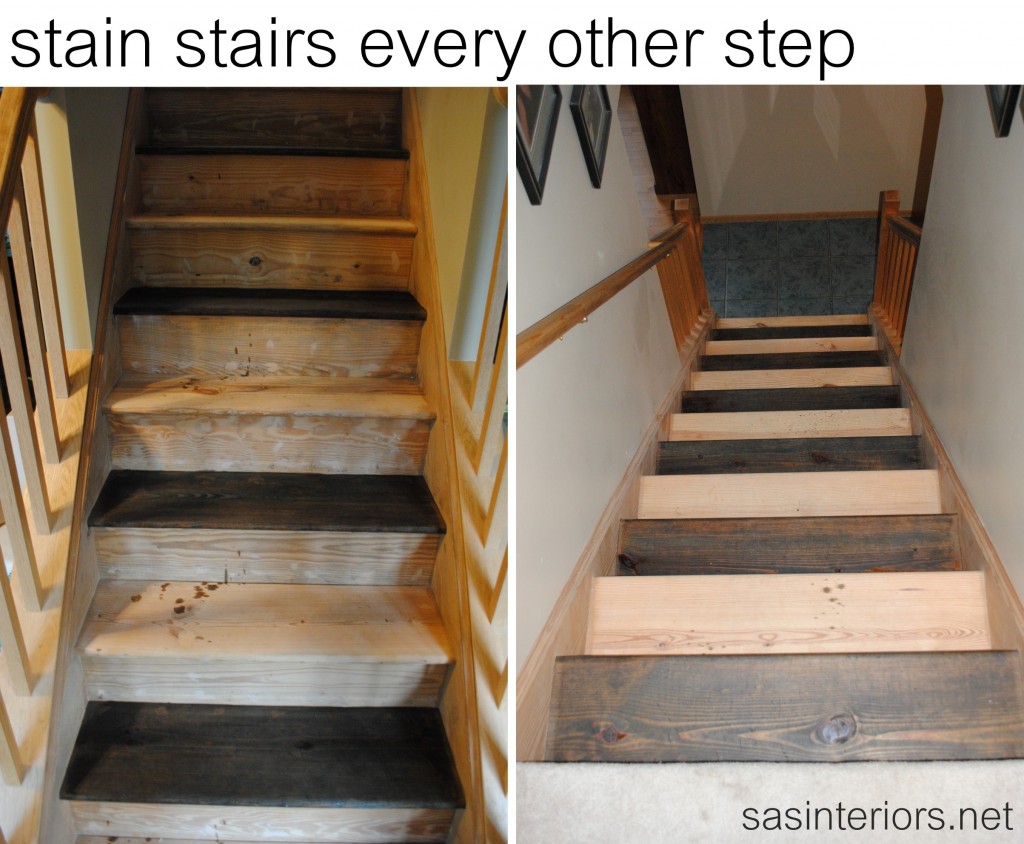
So… because I had to break the project up into two phases, it took longer. After applying the first coat of stain, it soaked right into the wood, and was dry within about 1-2 hours – there was absolutely no wiping away needed.
Then I applied a second coat of stain, which also soaked right in and took about 1-2 hours to completely dry. At this point, the stair had a really dull finish to it, but it still wasn’t dark enough for my taste.
So a day later, I added a third coat of stain and that was key!! It took a good day for it to completely dry, but I was happy. Then I was able to move on to the other stairs that were still raw.
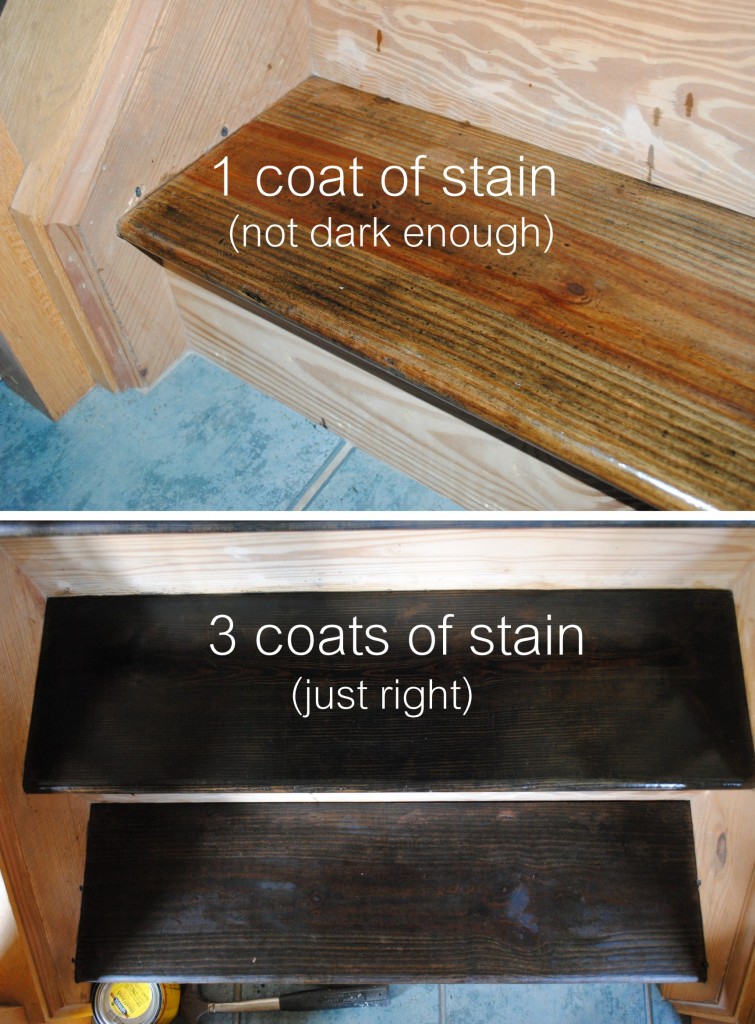
The more coats you apply, the darker the result
Once the third coat of stain was complete, I sealed the stairs with Polyurethane. I had tested one small area using a semi-gloss finish, but it wasn’t right, so I decided on a gloss finish. It gave just enough sheen, but wasn’t overly glossy (if that makes sense).
Kate recommended applying 2-3 coats of polyurethane and this time I took her advice. After all my hard work, I wouldn’t want these stairs to get ruined!
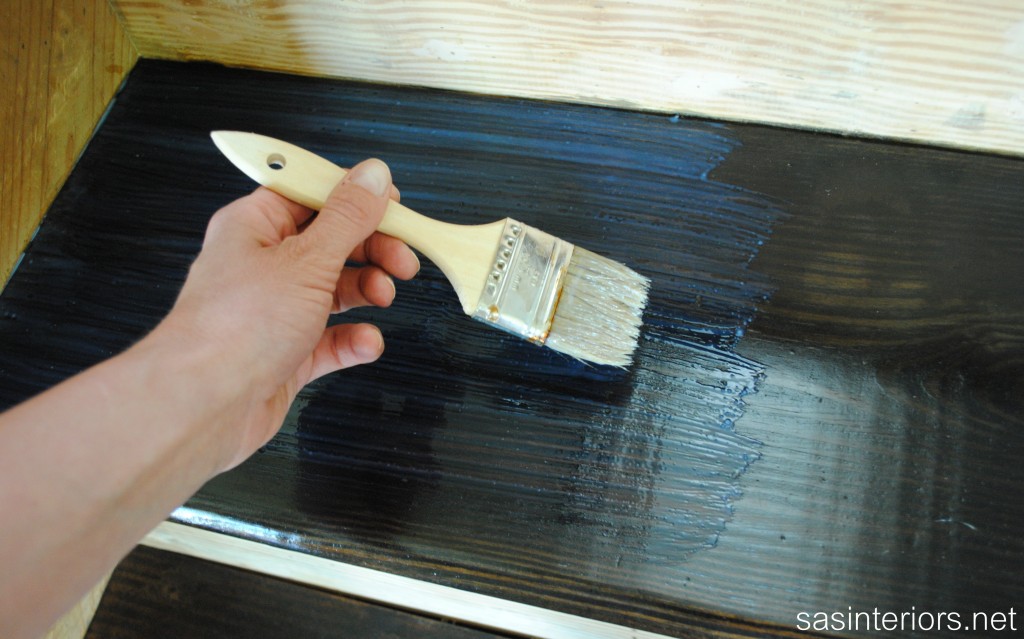
The polyurethane that I used had a blue tinge when applied (which I freaked out about for only a few seconds), but quickly went away – thank goodness!
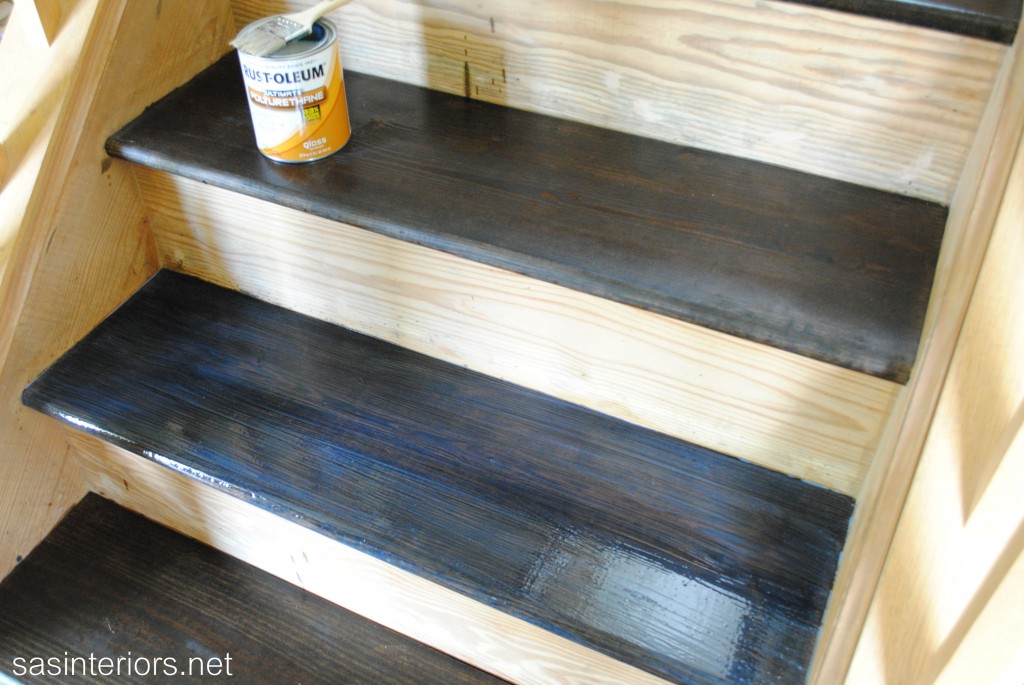
And that’s it for the staining process. This same process and techniques could also be used for furniture.
I got a few comments from readers after my last post that they enjoyed how thorough and explanatory my post was, so I tried to do the same with this – I hope you enjoyed it and learned something new. If you still have questions, let me know!
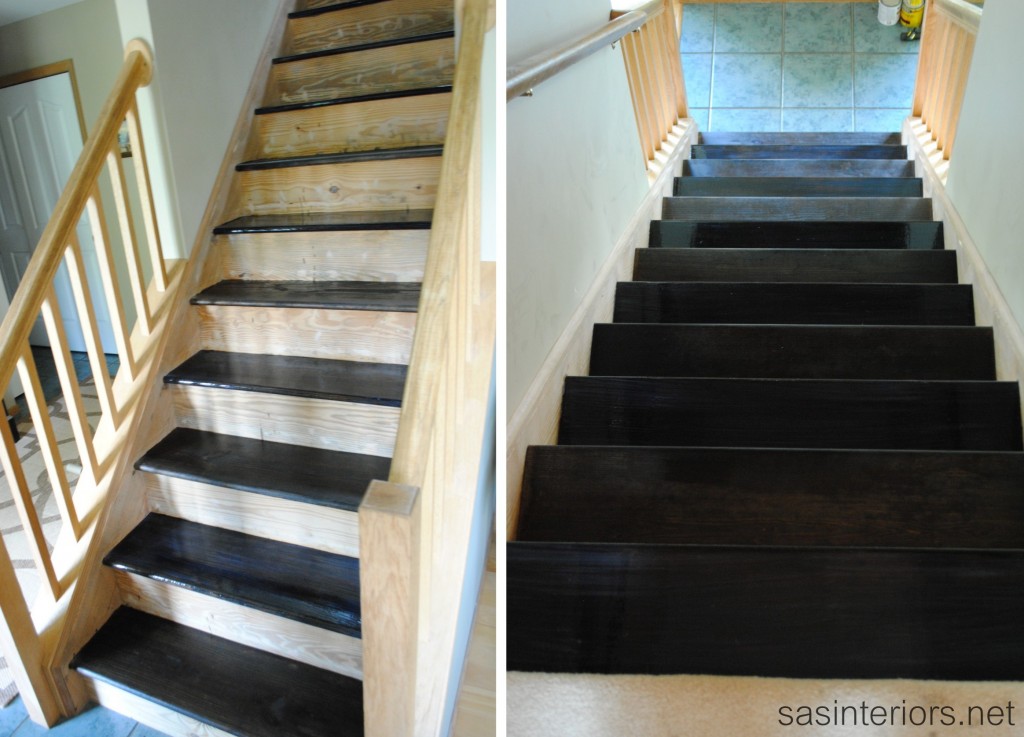
It’s really coming along and I’m excitedly anxious to start the next process… painting the risers, banister, baluster, and stringer! Until next time…
